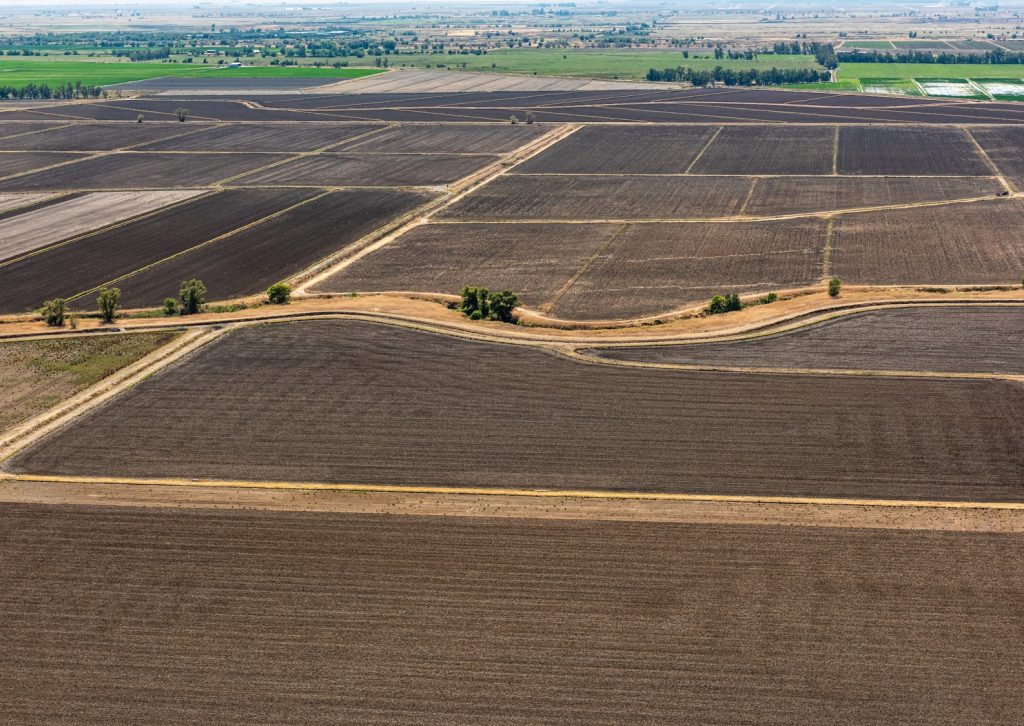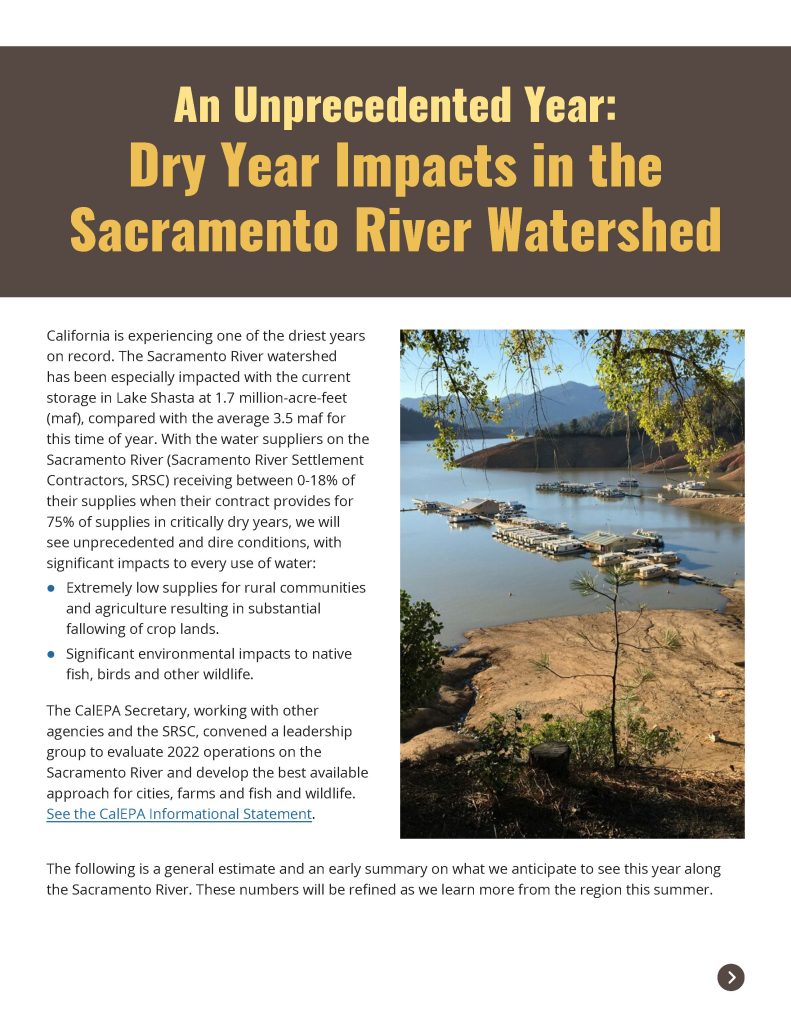By David Guy, Northern California Water Association
Tim Johnson, California Rice Commission
A briefing earlier this week painted the picture of the devastating impacts the multi-year drought has had on the west-side of the Sacramento Valley, including the impacts on farmers, communities, water suppliers and fish and wildlife. There was also discussion on solutions that will help the drought-impacted communities, including small and medium-sized businesses, navigate the devastating impacts during this challenging period.
California is experiencing one of the driest years on record. The Sacramento River watershed has been especially impacted with the current storage in Lake Shasta at 1.77 million-acre-feet, compared with the average 3.5 million acre-feet for this time of year. As a result of these unprecedented and dire conditions, there will be impacts to every use of water–low supplies for rural disadvantaged communities resulting in drinking water impacts; agriculture leading to substantial fallowing of croplands and job losses; and significant environmental impacts to native fish, birds and other wildlife that depend on water on the landscape and in the rivers.
For context, 600 square miles of farmland is left fallow this year on the west-side of the Sacramento Valley, which is more than 370,000 acres of farmland, nearly 80% of the total farmland in this service area. There is virtually no rice planted on the west-side of the Valley. Other crops, including tomatoes, seed crops and almonds have also been affected.

According to a report by Daniel A. Sumner and William A. Matthews, Department of Agricultural and Resource Economics, University of California, Davis, “drought in 2022 is severe by any measure. The 2020 and 2021 water years left California, and especially California agriculture, damaged and vulnerable.” The report estimates that in the Sacramento Valley there will be 14,300 jobs lost; $1.3 billion in lost economic value added; $732 million in lost labor income; and supply chains are devastated. See the full report here.
Employers and businesses vital for the planting, growing, harvesting, milling, processing, and retailing of rice and other crops are facing irretrievable losses this summer and fall due to a third year of drought. Extremely low water levels in Lake Shasta means that water settlement contracts that require the delivery of no less than 75% of contracted water in critically dry years, like this year, have been cut to between 0 and 18%, dictating a drastic cut in agricultural production and deliveries to refuges and ricelands that make up the Pacific Flyway. Industry employers (dryers, warehouses, fertilizer dealers, crop duster, mills) are laying off skilled workers and not hiring seasonal employees. Facilities are being shut down for the season and may not reopen. Unemployment has spiked for jobs that support farming. In turn, whole communities are affected: schools, local stores, and social services. In sum, the drought will have devastating impacts on the businesses, the workforce, our communities, and the environment.

In a time of continued supply chain disruptions and rising inflation, this chronic drought in California makes it more perilous and raises additional concerns about the resiliency of our food and agriculture systems and the infrastructure necessary to sustain them. There is also a concerted effort, working with state and federal agencies, to take actions that will help fish and wildlife survival this year.
We encourage you to watch a recording of the full briefing (about 50 minutes) by clicking here.
The presenters included:
- Don Bransford, Farmer, and President, Glenn-Colusa Irrigation District Board of Directors-Drought: Water Crisis and Catastrophic Conditions
- Daniel Sumner, Professor at UC Davis-Drought: Impacts to Sacramento Valley Economy
- Kevin Dennis, General Manager DePue Warehouse-Drought: Resilience and Recovery for Small and Medium-sized Businesses and Communities
- Denise Carter, Benden Farms-Drought: A Producers Perspective
- Nick Biscay, CEO & President of Stanislaus Farm Supply-Drought: Business Perspective
This briefing paints a vivid picture of the drought impacts, for more information on the drought impacts, click on the document below. The leaders in the Sacramento Valley are working on solutions to provide relief for this year, as well as water resources managers working hard to prepare for another dry year in the region.





